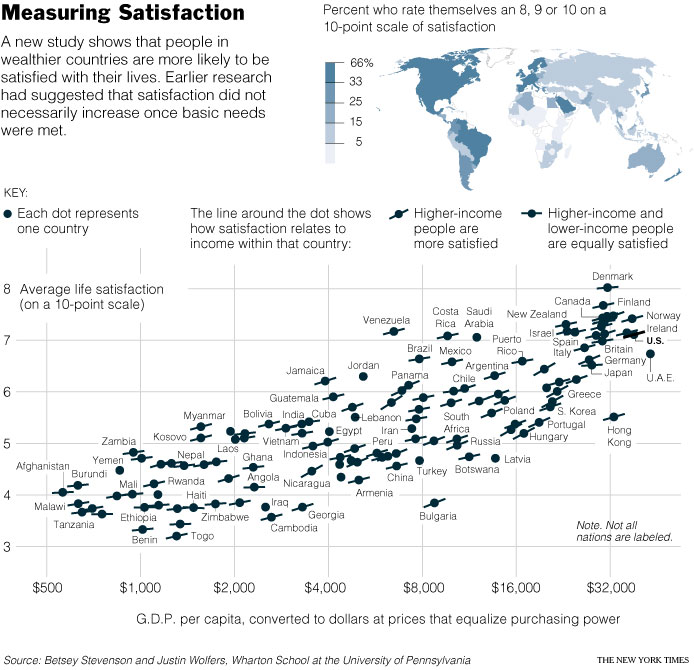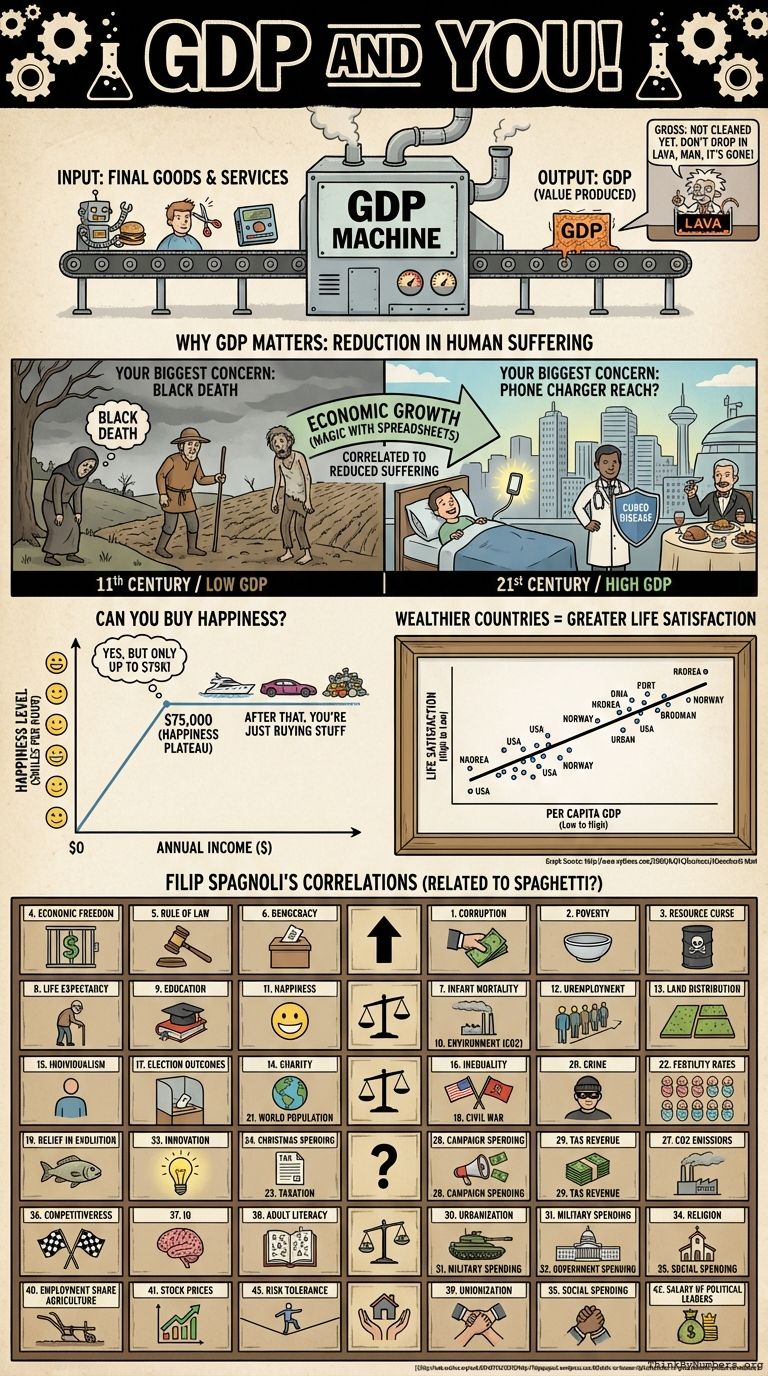GDP stands for Gross Domestic Product, which sounds medical but isn't. It's the value of all final goods and services produced within a country. The "gross" part means it hasn't been cleaned yet.
If you ever drop your GDP into a river of molten lava, let it go, because man, it's gone.
The reason GDP matters is that it is directly correlated to a reduction in human suffering. Economic growth is the primary differentiating factor between a life lived in the US and a life lived in North Korea. It's also the primary differentiating factor between a life lived in the 11th century (when your biggest concern was the Black Death) and the 21st century (when your biggest concern is whether your phone charger will reach your bed).
Economic growth has cured countless diseases which would have otherwise imbued countless lives with unimaginable suffering. Economic growth has prevented billions from dying of starvation. If governments will get out of its way, economic growth will eventually eliminate human suffering from the planet. It's like magic, but with spreadsheets.
According to the most recent income/happiness study, the lower a person's annual income falls below $75,000 a year, the unhappier he or she feels. But no matter how much more than $75,000 people make, they don't report any greater degree of happiness. This raises the profound question: Can you buy happiness? Answer: Yes, but only up to $75,000 worth. After that you're just buying stuff.
The strong correlation between happiness and GDP is illustrated below.

Graph Source: http://www.nytimes.com/2008/04/16/business/16leonhardt.html
Filip Spagnoli identifies an array of positive and negative correlations between per capita GDP and the following metrics. I wonder if he's related to spaghetti?
1. Corruption 2. Poverty 3. The Resource Curse 4. Economic Freedom 5. Rule Of Law 6. Democracy 7. Infant Mortality Rates 8. Life Expectancy 9. Education 10. The Environment 11. Happiness 12. Unemployment 13. Land Distribution 14. Charity 15. Individualism 16. Inequality 17. Election Outcomes 18. Civil War 19. Belief In The Theory Of Evolution 20. Crime 21. World Population 22. Fertility Rates 23. Taxation 24. Spending On Christmas Gifts 25. Casual Sex 26. Equality Before The Law 27. CO2 Emissions 28. Campaign Spending 29. Tax Revenue 30. Urbanization 31. Military Spending 32. Government Spending 33. Innovation 34. Religion 35. Social Spending 36. Competitiveness 37. IQ 38. Adult Literacy Rates 39. Unionization 40. Employment Share Of Agriculture 41. Stock Prices 42. The Salary Of Political Leaders 43. Risk Tolerance



Comments